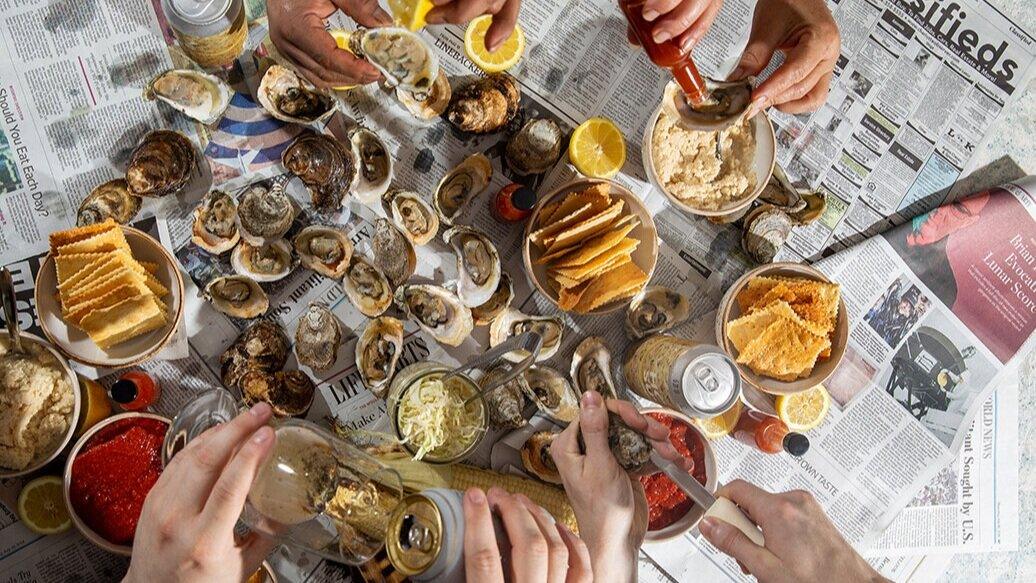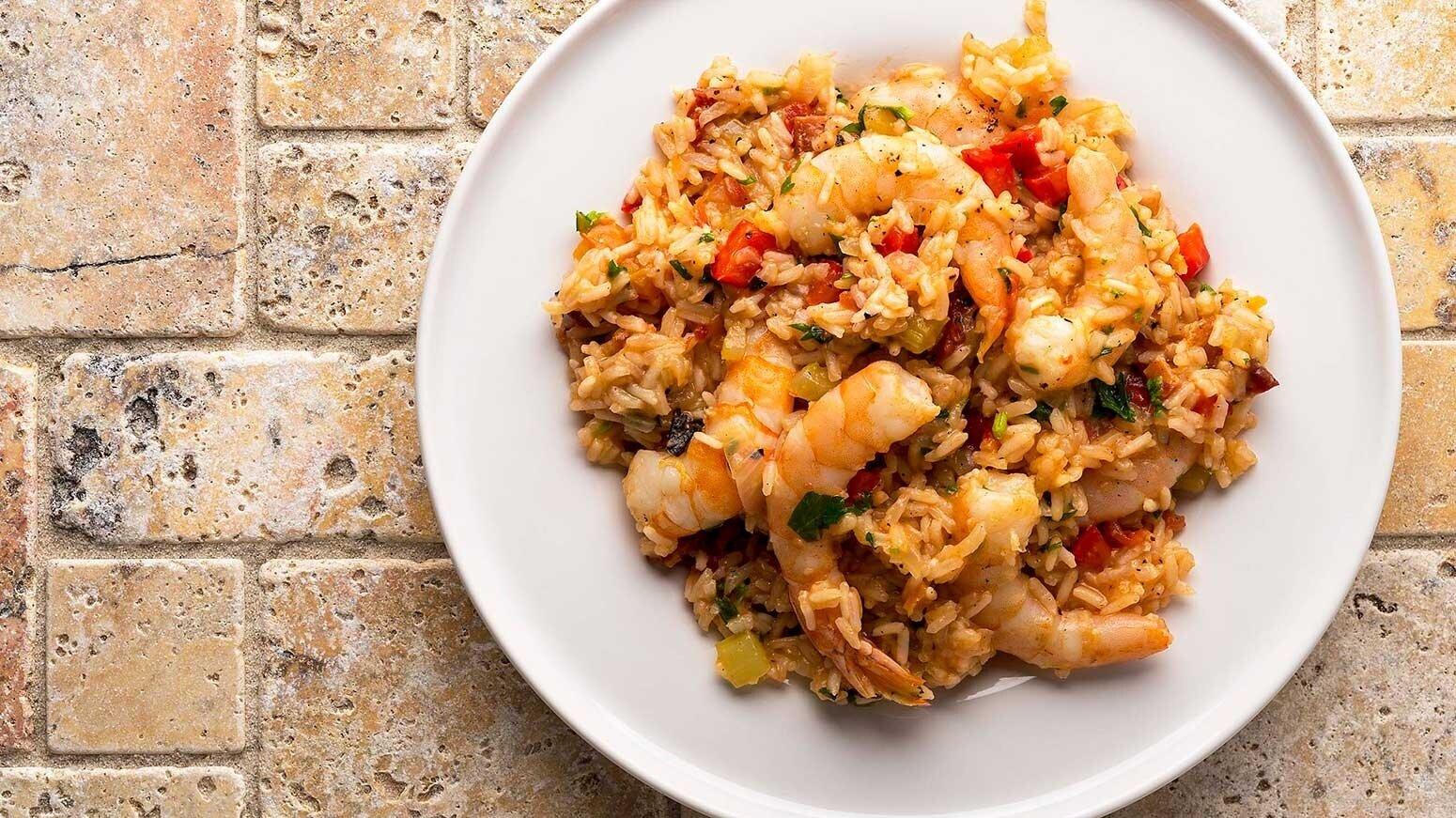Article: Oyster Roast as Cultural Exchange

Oyster Roast as Cultural Exchange
Last year, I threw a Lowcountry-style oyster roast for my friends in California. Eating oysters in California and in the Carolinas are two entirely different experiences. On the West Coast, oysters are “precious” in every sense of the word. They are raised in oyster farms and, therefore, are exorbitantly expensive, costing $2-3 each at most restaurants. And given their cost, they are typically presented at your table on the half shell, nestled in a beautiful bed of crushed ice.
This is a stark contrast to the experience of your typical oyster roast in the Southeast. Oysters are generally caught in the wild and are much cheaper; I’ve bought them in Georgia for less than $50 per bushel. But all good things must come to an end, and the eating of fresh oysters in the Southeast is generally confined to a season corresponding to the winter months, where the water is cold enough to keep bacteria down to safer levels. So, most of my formative oyster-eating experiences were spent shivering outdoors around a plywood table with a shucking knife in one hand and a cold beer in the other.
Wait…did you say “plywood table”? And…” outside”? In the winter? The classic Lowcountry Oyster Roast is an informal event held outside beside a big firepit used to roast, or actually steam, the oysters before they are served. When ready, the pitmaster will scoop the steaming hot oysters up with a shovel and parcel them out to the tables around which hungry partygoers are gathered. Everyone is armed with an oyster shucking knife to pry open the shells, and though this sounds dangerous, the injuries are few as the oysters, when steamed, tend to relax their grip slightly and are far easier to pry open.
So as a Southern expatriate living in California, I decided back in December to throw an oyster roast for all of my single friends not traveling out of town to visit family for Christmas Eve. Bright and early on the 24th, my 8-year-old son and I set out for Tomales Bay, famous in the Bay Area for its oyster farms. From the dock, you could look out over the misty bay and see the oyster farmers busily heaving up the heavy oyster traps, preparing for the Christmas rush…a vista that somewhat made up for the fact that I was paying about $200 for just 100 oysters, or about 4 times the dock price back home in Georgia.
Returning home, I started to set up for the party…here’s what you need to throw a proper oyster roast_
-
An oyster knife for each guest (and a first aid kit if you’re a pessimist)
-
A large fire to generate the coals to roast the oysters, as well as for your guests to huddle around
-
Wet towels or even burlap to spread over the oysters at they steam
-
A table you don’t mind scratching up with the oyster shelves. A sheet of plywood over two sawhorses works well.
-
A container for the shells. I’ve seen many people cut a hole in the plywood table and put a trashcan underneath. I have a large steel tub thats a little more decorative
-
A selection of sauces, but never butter. Cocktail sauce, Tabasco, and comeback sauce are all favorites
-
Saltine crackers
After building a massive fire in the firepit, I sat with my beer and waited for the fire to burn down to the coals I’d need to roast the oysters. Once our guests arrived, it took a little convincing that the party would be held outside in late December, but the large fire, blankets, and open bar I’d set up coaxed them all onto the patio.
Once I steamed the first batch and shoveled them onto the plywood table, I stood there proudly and waited for everyone to lay into the feast. They looked back at me and asked if I was going to shuck the oysters. I realized then a cultural divide between Georgia and California oyster eating that I hadn’t anticipated. Even at roadside “BBQ Oyster” joints along the West Coast, there is usually someone who opens the oysters and serves them to you on the half shell. When I explained that the communal shucking of the oysters was part of the experience, everyone picked up their oyster knife, gave me a look of “Are you sure this isn’t dangerous?”, and after my two-minute demonstration, good-naturedly set themselves to their task. Soon, everyone was laughing, drinking, and enjoying their oysters like they’d been doing this all their lives, and for a moment…I felt a twinge of nostalgia for all the oyster roasts my best friend, and I had thrown back home in Savannah, in his backyard overlooking the marsh.
As everyone packed up to go home, they all asked me what that wonderful “Comeback Sauce” was and if I could possibly give them the recipe. So I’ll share it here with you as well, adapted from a couple of different versions of Alabama chef Adam Evans’ recipe.
Comeback Sauce
Ingredients
-
½ small shallot, chopped
-
2 cornichons, chopped
-
1 garlic clove, chopped
-
¾ cup mayonnaise
-
2 Tbsp. finely grated fresh horseradish or 1 Tbsp. drained prepared horseradish
-
1 Tbsp. chopped fresh flat-leaf parsley
-
2 tsp. drained capers
-
2 tsp. whole grain mustard
-
3 celery stalks, chopped
-
2 tsp. finely grated lemon zest
-
1 Tbsp. fresh lemon juice
-
½ tsp. freshly ground pepper
-
½ tsp. cayenne pepper
-
Kosher salt and freshly ground black pepper
Preparation
Combine the celery, shallot, cornichons, garlic, mayonnaise, horseradish, parsley, capers, mustard, lemon zest, lemon juice, and cayenne in a blender or food processor and puree until smooth; season with salt and pepper. Best made the day before.



